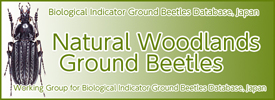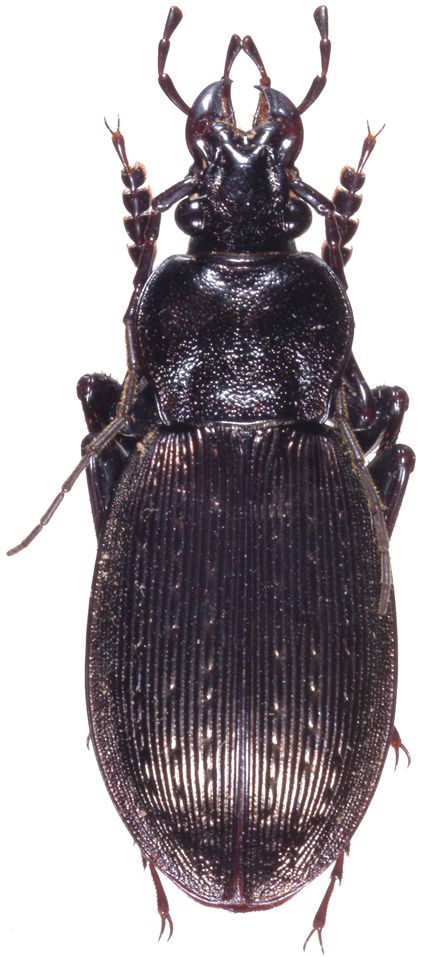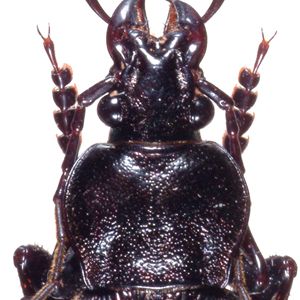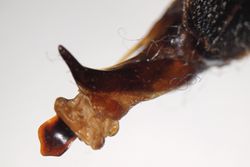| Ecology |
flatland (Ishitani 1996), cultivated area (Okutani et al. 1971, Kinki Research Group of Carabid Beetles 1979, Yahiro et al. 2001, Carabidological Society of Shiga 2003, Sota 1985b, Sota 1985d), bank (Kinki Research Group of Carabid Beetles 1979, Aono 1987), riverbed (Kinki Research Group of Carabid Beetles 1979, Terada 1983, Ishii et al. 1996, Ishitani 1996, Yamazaki et al. 1999, Yahiro et al. 2001, Carabidological Society of Shiga 2003, Lee and Ishii 2010), secondary forest (Kinki Research Group of Carabid Beetles 1979, Yahiro et al. 2001, Carabidological Society of Shiga 2003), bamboo thicket (Kinki Research Group of Carabid Beetles 1979, Carabidological Society of Shiga 2003), pasania forest (Kinki Research Group of Carabid Beetles 1979), vineyard (Kinki Research Group of Carabid Beetles 1979), plantation of Chamaecyparis obtusa (Kinki Research Group of Carabid Beetles 1979, Tanaka 1981), Pinus densiflora forest (Kinki Research Group of Carabid Beetles 1979), beech forest (Kinki Research Group of Carabid Beetles 1979), orange field (Kinki Research Group of Carabid Beetles 1979, Suga 1981), orchard chestnut (Kinki Research Group of Carabid Beetles 1979), Quercus serrata forest (Tanaka 1981), plantation of Chamaecyparis obtusa and Cryptomeria japonica (Tanaka 1981, Tanaka 1991b), woods(Sota 1985b, Sota 1985d), mountain (immigration from lower habita) (Sota 1985c), flatland and basin (Sota 1987b), laurel forest in low land (Sota 1987b), Miscanthus sacchariflorus community (Aono 1987), Robinia pseudoacacia forest (Tanaka 1991a), coppice forest of Quercus serrata and Quercus acutissima (Tanaka 1991a), grassland along mountain trail (Tanaka 1991b), grassland adjoining to paddy field (Tanaka 1991a, 1991b), meadow (Tanaka 1991a, 1991b), onion field (Togashi and Kitajima 1993), cedar forests (Togashi and Sugie 1994), fig orchard (Ishitani and Yano 1994, Ishitani 1996), forest zone (Kimoto and Yasuda 1995), rape field (Ishitani 1996), waste land in marginal and arround riverbed (Carabidological Society of Shiga 2003), upland field (Hiramatsu 2004), suburban forest (Fujita et al. 2008), urban forest (Fujita et al. 2008), paddy field (Kagawa 2008), grassland (Suzuki and Sakuratani 2010), Satoyama forest (Suzuki and Sakuratani 2010), adult (Sota 1985c, Sota 1985d, Sota 1986a, Sota 1987b, Ishitani 1996, Yamazaki et al. 1999), from April to August (Sota 1985a, Sota 1986a, Sota 1987b, Tanaka 1991a), summer (Tanaka 1981, Tanaka 1991a, 1991b), adult beetles copulate and lay eggs from April to August (Sota 1985a), from April to June (Ishitani 1996), carnivorous (Ishitani 1996), Anomala testaceipes (Yamashita 1978), Maladera castanea (Yamashita 1978), Popillia japonica (Yamashita 1978), Adoretus tenuimaculatus (Yamashita 1978), Melolonta japonica (Yamashita 1978), Mimela splendens (Yamashita 1978), Actenicerus pruinosus (Yamashita 1978), Apriona japonica (Yamashita 1978), Erebus ephesperis (Yamashita 1978), Chionarctia nivea (Yamashita 1978), Agrotis segetum (Yamashita 1978), Xylena formosa (Yamashita 1978), Arcte coerula (Yamashita 1978), Marumba gaschkewitschii (Yamashita 1978), Neope goschkevitschii (Yamashita 1978), Pelopidas mathias (Yamashita 1978), Sinopoda forcipata (Yamashita 1978), earthworm (Yamashita 1978, Sota 1986d), slug (Yamashita 1978, Sota 1986d), Acusta despecta (Yamashita 1978), Cynops pyrrhogaster (Yamashita 1978), Hyla japonica (Yamashita 1978), Tabanus trigonus (Kinki Research Group of Carabid Beetles 1979), Larvae fed on earthworms only (Sota 1985a, Sota 1985c, Sota 1985d, Sota 1987b, Tanaka 1991a), their diets include various animal and plant materials though insect larvae are the main food items (Sota 1985d, Sota 1987a, Sota 1987b), during April and May the adults eat Lepidopteran larvae mainly (Sota 1987b), during June and July the adults almost eat earthworms (Sota 1985a, Sota 1987b), snails (Sota 1986d), earthworms (Sota 1986d), spiders (Sota 1986d), Odonata (Sota 1986d), Orthoptera (Sota 1986d), Heteroptera (Sota 1986d), corpses of adults cicadas (Cryptotympana facialis and Graptopsaltria nigrofuscata) (Sota 1986d), larvae of Hermonassa cecilia and Diarsia canescens (Sota 1986d), Diptera (Sota 1986d), Coleoptera (Sota 1986d), frogs (Sota 1986d), mice (Sota 1986d), ripe fruits which had fallen to the ground such as Celtis sinensis, Amorphophalus kiusianus (Sota 1986d), Elaegnus umbellata, Prunus sp. and Diospyrous kaki, fallen flowers of Querucus serrata and some other flowers, juicy stem of Amorphophalus kiusianus and fruit-like branches of Hovenia dulcis (Sota 1986d), larvae of moths (larva) (Tanaka 1991a), millipedes and sow bugs on the morrow of ecdysis (larva) (Tanaka 1991a), carcass of frogs (Carabidological Society of Shiga 2003), carcass of Japanese grass lizard and other lizard (Carabidological Society of Shiga 2003), carcass of Corvus corone (Carabidological Society of Shiga 2003), carcass of Passer montanus (Carabidological Society of Shiga 2003), carcass of field mouse (Carabidological Society of Shiga 2003), carcass of weasels (Carabidological Society of Shiga 2003), carcass of cats (Carabidological Society of Shiga 2003), carcass of moles (Carabidological Society of Shiga 2003), carcass of snakes (Carabidological Society of Shiga 2003), carcass of Columba livia (Carabidological Society of Shiga 2003), carcass of fish or shellfish (Carabidological Society of Shiga 2003), the larvae and adults of moths and butterflies, Orthetrum japonicum, Macromia amphigena and other Odonata, Trypoxylus dichotomus and other Scarabaeidae, Prosopocoilus inclinatus, Dorcus rectus and other Lucanidae, Epomis nigricans, Dolichus halensis and other Carabid beetles and roadkilled Damaster blaptoides and Carabus yaconinus (Carabidological Society of Shiga 2003), collecting under lights (Kinki Research Group of Carabid Beetles 1979), hibernating in slope (Suga 1981), Each egg is laid in a small cavity under the soil surface (Sota 1985b, Sota 1987a), Most beetles die during the first reproductive season but a small number survive to the next year and reproduce again (Sota 1985b), The beetles are mainly nocturnal (Sota 1985b), mainly nocturnal but showed diurnal activity in spring and early summer (Sota 1985d), the ovarian maturation in the first year of adult life will be suppressed by short-day conditions in autumn (Sota 1986a), the newly individuals emerged in early July and August lay eggs again (Tanaka 1991a), they change their activity seasonably (Tanaka 1991a), proovigenic type (Ishitani 1996) |
 |
| 






